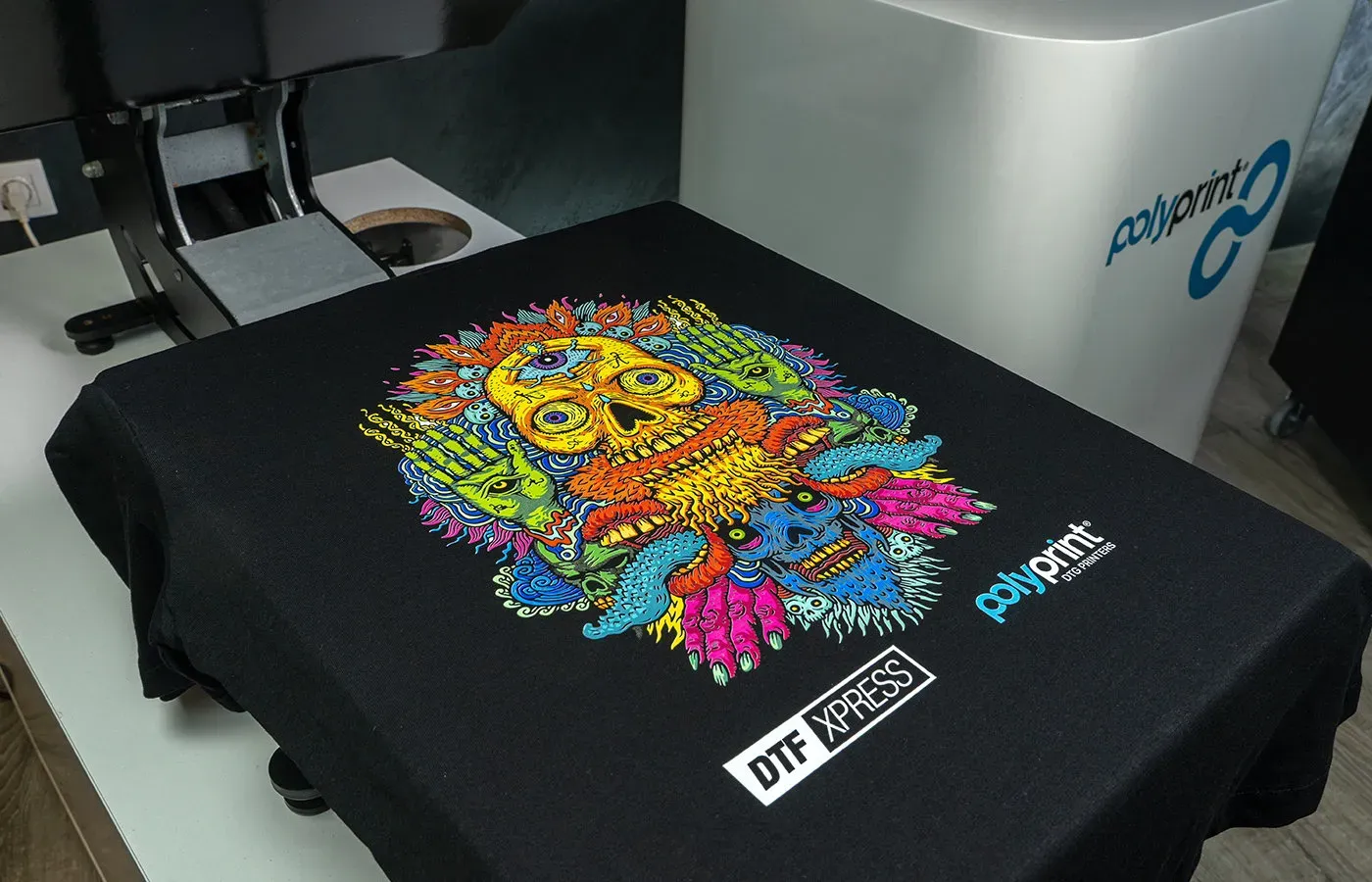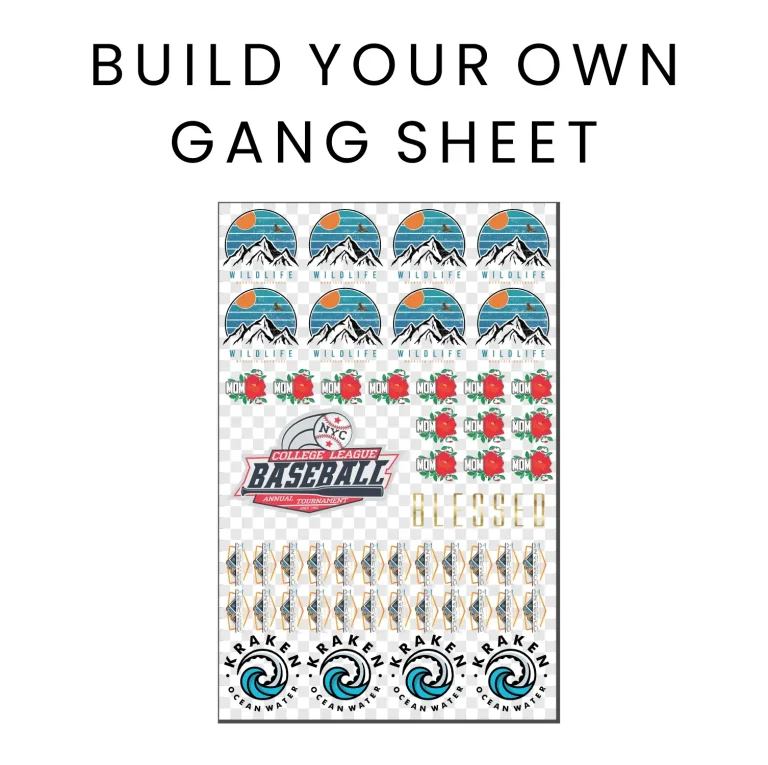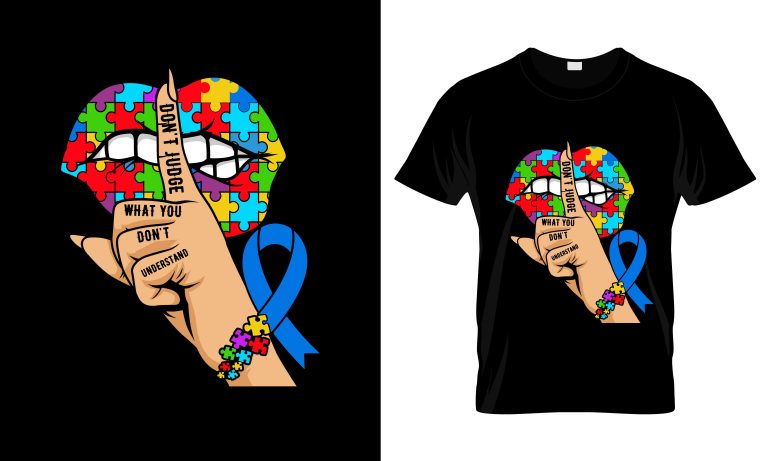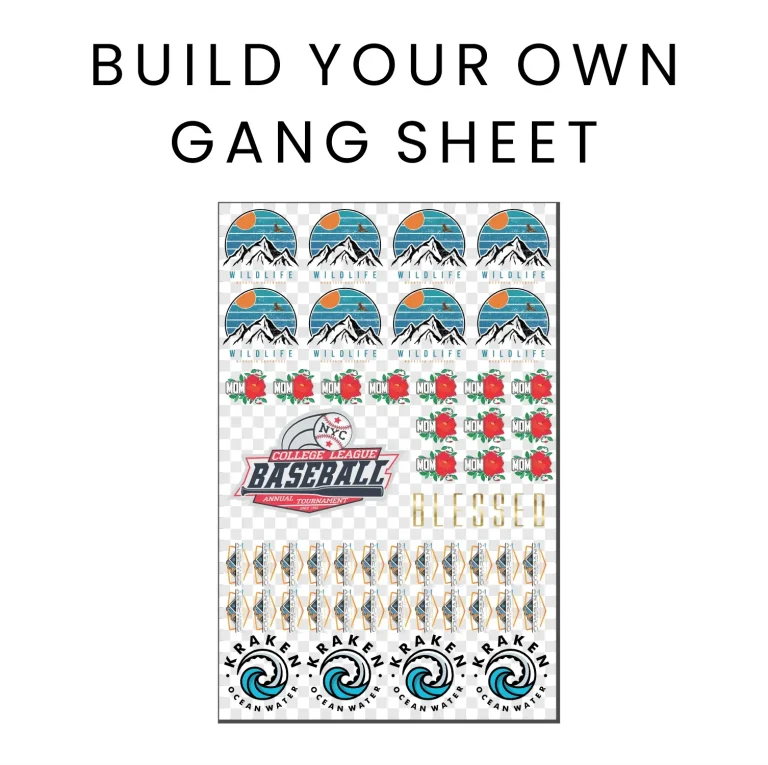DTF Printing: A Comprehensive Guide for Beginners
DTF printing, or Direct to Film printing, has quickly established itself as a groundbreaking technique in the world of textile customization, captivating small businesses and hobbyists alike. This innovative method allows for high-quality design transfers onto a variety of fabrics, making it a preferred choice for custom apparel and unique projects. One of the significant benefits of DTF printing is its flexibility, which surpasses traditional fabric printing methods like sublimation, particularly concerning material compatibility. Moreover, as consumers increasingly seek sustainable printing methods, DTF printing stands out due to its minimal waste and eco-friendly processes. In this article, we’ll explore how DTF printing is reshaping the landscape of custom transfer printing and why it’s gaining momentum in the market.
Direct to Film printing, popularly known as DTF, offers a new horizon for those eager to explore custom textile design. This advanced technique involves transferring vibrant graphics onto fabrics using a film coated with a specialized adhesive, making it easier than ever for crafters to produce stunning apparel. As businesses and creators become more conscious of their environmental footprint, sustainable printing methods like DTF are gaining traction, thanks to their reduced ink waste and eco-friendly materials. Additionally, understanding the differences in methods such as DTF vs sublimation is crucial for anyone looking to invest in personalized printing solutions. Join us as we dive into the nuances of DTF printing and its unparalleled advantages for both beginners and experienced printers.
What is DTF Printing and How Does It Work?
Direct To Film (DTF) printing is a revolutionary approach to transferring elaborate designs onto fabric. The process begins with printing images onto a specialized film using eco-solvent or water-based inks. Once the image is printed, an adhesive powder is applied, which is then melted through heat, allowing the design to stick perfectly to various types of fabric including cotton, polyester, and blends. This technique stands out in the sewing and crafting communities due to its ability to produce high-quality prints with minimal waste, enhancing artistic freedom.
The core of DTF printing lies in its versatility and the breadth of materials it can accommodate. Unlike methods such as screen printing, which may be limited to certain fabric blends, DTF printing’s compatibility with an extensive range of textiles ensures that crafters can pursue a diverse portfolio of projects. From t-shirts to bags and home decor items, the possibilities are unlimited when mastering DTF printing, setting the groundwork for creativity and uniqueness in custom apparel.
The Advantages of DTF Printing Over Traditional Methods
One of the primary advantages of DTF printing is its exceptional versatility, as it can seamlessly transfer designs on multiple fabric types. This flexibility opens new avenues for custom apparel production, allowing users to create items using cotton, polyester, or even blends, catering better to market demands. Additionally, DTF printing eliminates many of the complexities associated with traditional methods, paving the way for beginners to confidently engage in textile printing without needing extensive prior experience.
Moreover, DTF printing produces high-quality outcomes that are both vibrant and durable. Once prints are transferred to garments, they can withstand repeated washings while retaining their vivid colors and intricate details. This durability is a significant selling point, especially for businesses producing branded apparel, as it establishes reliability and long-term satisfaction among customers.
The Eco-Friendly Benefits of DTF Printing
The shift toward sustainable printing methods is becoming increasingly crucial in today’s environmentally conscious market. DTF printing stands out with its lower environmental impact compared to conventional screen printing. Because it uses precise ink application techniques, DTF minimizes ink wastage, which is a common issue with traditional methods. This significant reduction in excess materials not only makes DTF a cost-effective solution but also aligns with the growing trend of environmentally responsible production.
Furthermore, many companies involved in DTF printing are actively seeking eco-friendly materials and practices, such as using non-toxic inks and sustainable films. This commitment to sustainability resonates well with consumers, many of whom are becoming more discerning about the environmental practices of the brands they support. By choosing DTF printing, businesses not only enhance their product offerings but also contribute positively to the planet.
How DTF Printing is Shaping the Custom Apparel Market
The rapid evolution of DTF printing technology has opened up a wealth of opportunities for small businesses and independent creators in the custom apparel market. As platforms like DesignBundles.net introduce custom transfer printing options, they empower users to create unique, personalized products without the need for large investments in equipment. This development proves vital for entrepreneurs looking to establish their brands while maintaining low overhead costs.
The demand for personalized apparel has surged, with many consumers seeking customized items that reflect their individual styles. This surge has also prompted established businesses to embrace DTF printing technology, driving innovation and competition within the market. Enhanced production capabilities, such as those offered by Snuggle’s DTF transfer services, indicate a bright future for this printing method, confirming its critical role in meeting the changing preferences of consumers.
Investment in DTF Printing Technologies and Equipment
The financial stake companies are placing in DTF printing technologies speaks volumes about its growing acceptance and importance in the garment industry. Companies like EazyDTF are investing significantly in advanced DTF printers and sophisticated operational systems, allowing them to deliver high-quality transfers with exceptional efficiency. This level of investment not only enhances productivity but also positions these companies to meet the growing demands of a quick-turnover market.
By leveraging state-of-the-art printing technologies, businesses can offer same-day shipping options for their products, thereby improving customer satisfaction and loyalty. The ability to rapidly respond to changing customer needs is crucial in today’s fast-paced market, highlighting how investment in DTF printing technology can serve as a competitive advantage, ultimately benefitting both companies and consumers alike.
Comparing DTF Printing with Other Techniques Like Sublimation
When considering the various options for textile printing, understanding the differences between DTF and sublimation printing is crucial for crafters. While sublimation printing typically requires polyester fabrics for best results, DTF printing is notably more versatile as it can be used on cotton, natural fabrics, and other blends. This flexibility not only widens the market reach for businesses but also enhances creative possibilities for individual projects.
Customization is another aspect where DTF printing has an edge over sublimation. Using DTF, designers can easily modify prints without the strenuous heat application process required in sublimation. This simplifies the design process, allowing creators to experiment freely and produce unique, high-quality items that resonate with their target audience. By weighing the pros and cons of each method, individuals can make informed decisions based on their specific needs and material choices.
Frequently Asked Questions
What is DTF printing and how does it work?
DTF printing, or Direct to Film printing, is a modern textile printing method that transfers designs onto fabric using a special film and adhesive. The process involves printing an image onto a film, then applying heat and pressure with a heat press to transfer the design onto the garment, allowing for vibrant colors on various fabric types.
What are the benefits of DTF printing compared to other methods?
The benefits of DTF printing include its versatility to print on various fabric materials, ease of use for beginners, and the high-quality, durable prints it produces. Unlike traditional screen printing, DTF is less labor-intensive and results in less waste, making it a standout choice for custom transfer printing.
How does DTF printing differ from sublimation printing?
DTF printing differs from sublimation printing primarily in material compatibility. DTF can be used on a wider range of fabrics, including cotton and blends, while sublimation generally requires polyester for optimal results. This versatility gives users greater creative freedom when designing their projects.
Is DTF printing an eco-friendly option for custom apparel?
Yes, DTF printing is considered a sustainable printing method. It generates less waste than traditional printing processes and many DTF companies are adopting eco-friendly materials and practices. This focus on sustainability is increasingly important to consumers seeking environmentally responsible options.
What equipment is needed to get started with DTF printing?
To start with DTF printing, you’ll need a DTF printer, special films, a heat press, and appropriate transfer adhesives. This setup allows even beginners to create professional-quality custom transfers effectively without a steep learning curve.
What is the current market trend for DTF printing?
The DTF printing market is experiencing significant growth due to increasing demand for personalized and custom printing services. Entrepreneurs and platform providers are increasingly investing in DTF technology, leading to innovations and high-capacity production capabilities to meet the rising consumer needs.
| Key Point | Description |
|---|---|
| Introduction | Overview of DTF printing as a revolutionary textile printing technology for crafters and businesses. |
| Understanding DTF Printing | DTF utilizes specialized films and adhesive to transfer designs onto a variety of fabrics. |
| Advantages of DTF Printing | Versatile across different fabric types, user-friendly for beginners, and produces high-quality, durable prints. |
| Sustainability Benefits | DTF contributes to less waste and uses eco-friendly materials, appealing to modern consumers. |
| The Growing Market | Rapid growth with increasing demand for custom printing services, such as those offered by DesignBundles.net. |
| Investment in Technology | Companies like EazyDTF invest in advanced printers for increased production efficiency and customer satisfaction. |
| Comparing DTF to Other Methods | DTF boasts better material compatibility and customization ease compared to sublimation printing. |
Summary
DTF printing has quickly become a transformative force in textile printing, appealing to both novices and seasoned professionals. This method not only delivers vibrant and durable designs but also embodies a sustainable approach that aligns well with today’s eco-conscious consumers. As the market for personalized apparel continues to expand, DTF printing represents an innovative and accessible option that fosters creativity, efficiency, and quality in garment production. By understanding its advantages and leveraging the technology, individuals and businesses can thrive in this exciting niche of the printing industry.





